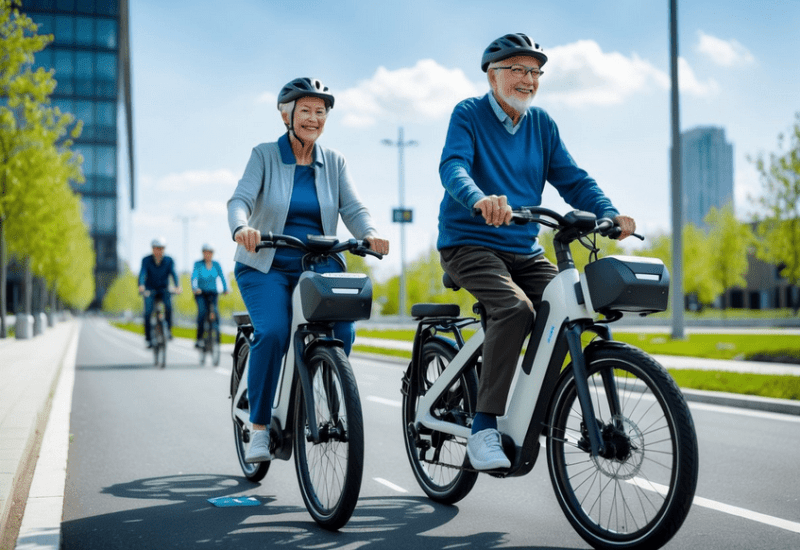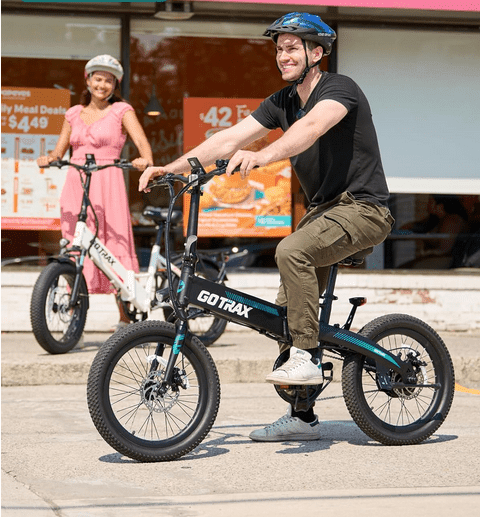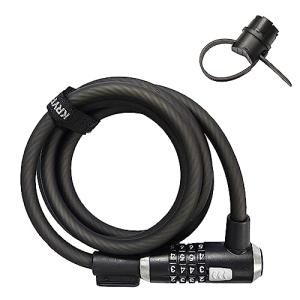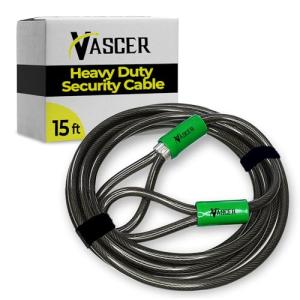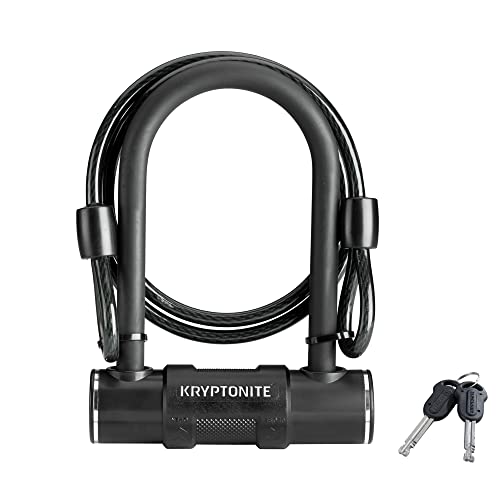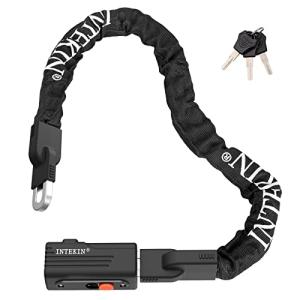Preventing Bike Theft: Guard Your Ride

Bike theft is a problem that touches cyclists' lives everywhere, leaving them without their valued mode of transportation and often with a feeling of violation. With over two decades of experience in bicycle security, I've seen firsthand how devastating bike theft can be—and how preventable it is with the right knowledge and tools.
This blog leverages my background to arm you with effective strategies for protecting your ride.
Our discussion will cover how to choose and use locks and delve into the mindset of thieves and innovative recovery steps if your bike gets stolen. A key point we'll explore is the importance of securing electric bikes properly—not just because they're expensive, but also due to their growing popularity among thieves for this very reason.
Stay tuned for insights that could save you from becoming another statistic in the rising trend of bike thefts. Ready to keep your bike safe?.
Key Takeaways
- Use strong locks, such as U-locks and cable locks, to secure your bike's frame and wheels. Lock it to a solid, immovable object in well-lit areas with many people around.
- To better protect your bike, think like a thief. Thieves target bikes that are easy to steal or not properly locked. They use tools like bolt cutters, so pick tough locks and secure parking locations.
- Report stolen bikes immediately to the police and spread the word through social media and local networks. Check online marketplaces, pawn shops, and register the theft on dedicated online databases for stolen bikes.
- Renters insurance may cover bike theft; check your policy details. It could help you replace a stolen bike if it gets taken from home or elsewhere.
- Clean your bike's lock regularly to prevent rust or dust from making it less effective over time. This keeps the lock working well when you need it most.
Essential Tips to Prevent Bike Theft

Keeping your bike safe starts with the right lock and knowing how to use it correctly. Find out where the best places are to secure your ride and keep thieves at bay.

Choosing a Reliable Bike Lock
Investing in a high-quality bike lock is key to preventing theft. Look for locks that are tough for thieves to cut through. You have options like U-locks, cable locks, and chain locks.
Each type suits different needs and situations. For instance, U-locks offer strong resistance against bolt cutters, while cable locks provide flexibility but might be less secure.
Using the right lock also means securing your bike to something solid and immovable. Always attach your bike to sturdy structures over weak or easily tampered ones. This makes it significantly harder for someone to steal your ride.
Now, let's talk about how best to use these locks effectively.
Correct Use of the Bike Lock
After finding the right lock, it is vital to know how to use it correctly. A good lock only works if you use it properly.
- Always secure your bike to a fixed object that can't be moved. Look for solid posts or racks bolted or cemented to the ground.
- Lock both the frame and the wheels of your electric bike. Thieves often take parts left unlocked, so make sure everything is secured.
- Use a U-lock to secure the frame and rear wheel together, then loop a cable lock through the front wheel and attach it to the U-lock.
- Choose well-lit areas for parking your bike. Thieves are less likely to target bikes that passersby easily see.
- Check that all parts of the lock snap or click into place securely before walking away from your bike.
- Make locking up a habit, even if you leave your bike for just a minute. It only takes seconds for a thief to steal an unsecured bike.
- Clean and maintain your locks regularly to ensure they work when needed. Dust and rust can make locks less effective over time.
Following these steps will help keep your bike safe and give you peace of mind while away.
Ideal places to lock your bike
Locking your bike in the right spot is crucial for keeping it safe. Thieves look for easy targets, so choosing a secure location can greatly reduce the risk of stealing your bike. Here are some tips on the best places to lock up your bicycle:
- Use a well-lit area: Bright lighting makes it risky for thieves to attempt a theft without being noticed. Choose spots where there's plenty of foot traffic and good visibility at all hours.
- Find a sturdy, fixed object: Secure your bike to something immovable like a bike rack or metal pole. Make sure the object can't be easily tampered with or cut through.
- Avoid secluded spots: Dark alleys or areas hidden from public view may seem safe, but they actually give thieves plenty of time to work undisturbed. Always go for more open and busy locations.
- Close to surveillance cameras: Locking your bike near security cameras adds an extra layer of deterrence. Thieves are less likely to target bikes within the camera's field of view.
- Near other bikes: A bike locked up alone is an easy target. Lock yours alongside others, ensuring yours is more securely fastened when possible.
- Inside designated parking areas: Many urban areas have specific bike parking zones for safety and convenience. These spots often have added security measures compared to random street poles.
Choosing smart and secure parking solutions plays a key role in bicycle security. Following these guidelines helps safeguard your ride against potential theft while away.
Understanding Bike Thieves

To protect your bike, you need to think like a thief. Bike thieves have their tricks, but once we learn them, we can stay one step ahead.
Recognizing what bike thieves look for
Bike thieves target easy catches. They look for bicycles left out in the open, especially if they're not properly locked. Unsecured bikes catch their eye first. Expensive models or electric bikes are big targets too.
Thieves know these types of bicycles can fetch a higher price on the black market.
They also search for bikes locked up but done so incorrectly. A lock around a wheel but not the frame invites them to strike. Bikes left in quiet, dark areas offer thieves the cover they need to work without getting caught.
Your best defense starts with understanding these risks and taking steps to make your bike less attractive to thieves looking for their next steal.
Common Methods Used by Bike Thieves
Thieves often carry tools like bolt cutters to snap through bike locks. They also might break chains or cables with force. Some even pick locks using specialized tools, showing just how determined they can be.
This makes choosing a tough lock and securing your bike properly very important.
Another tactic thieves use involves prying open locks when picking isn't an option. Being more valuable, electric bikes face higher risks of these theft methods. Knowing these strategies helps cyclists take preventive steps to deter theft and keep their bicycles safe from crafty criminals.
Steps to Recover a Stolen Bike
Finding your bike stolen can be a major setback. Yet, acting swiftly can greatly improve your chances of getting it back. Here are steps you should take immediately:
- Report the theft to the police as quickly as you can. Provide them with your bike's serial number, make, model, and any distinguishing features. This information is crucial for tracking down your bike.
- Use social media and local community networks to alert others about the theft. Sharing pictures and details of your stolen bike increases visibility and may help someone recognize it.
- Check online marketplaces and local selling platforms for listings that match your bike. Thieves often try to sell stolen bikes quickly.
- Visit nearby pawn shops and used bicycle stores with information about your bike. Ask if they have seen it or received any similar items recently.
- Register the theft on dedicated online databases for stolen bikes. These platforms can alert pawn shops and second-hand stores in their network.
- If you had a GPS tracking device installed before the theft, consider using it to monitor the location of your electric bike. This technology can lead you directly to your bike’s current location.
- Stay in touch with the police to follow up on any leads or updates regarding your case.
- Post flyers detailing the theft and offering contact information in your neighborhood and places where cyclists gather, such as coffee shops or bicycle repair shops.
Each of these steps plays an important role in increasing the odds of recovering a stolen bike while also spreading awareness about bicycle security among cyclists.
The Role of Insurance in Bike Theft
Renters insurance might be your hidden ally against bike theft, covering losses when you least expect it. Keep reading to find out how this can offer peace of mind on and off the road.
Does Renters Insurance Cover Bike Theft?
Yes, renters insurance can cover bike theft, but details vary by policy. It's important to check your specific policy to see what it covers. Some policies may require extra coverage for high-value items like electric bikes.
If your bike gets stolen inside your rented home or while you're out and about, the insurance might help you get back on two wheels.
Certain policies also offer protection against damage caused by theft or vandalism to your bicycle. This could be useful if someone breaks parts of your bike during an attempted theft.
Always review the terms of your renter's insurance to determine how well your bike is protected under different scenarios.
Conclusion
Let's talk about keeping your bike safe. Preventing bike theft is crucial for every cyclist out there.
Meet Dr. Alex Rivera, a leading expert in urban safety and bicycle security with over 20 years of experience. Dr. Rivera has dedicated his career to understanding how thieves think and the best ways to deter them.
With a Ph.D. in Criminal Psychology focused on property crimes, he has contributed significantly to designing anti-theft devices for bicycles, including advanced locking mechanisms and GPS tracking systems.
Dr. Rivera points out that choosing the right lock is just the start of preventing bike theft. He explains that secure storage solutions and regular maintenance make bikes less appealing targets.
According to him, well-lit areas tend to discourage thieves since they increase the chance of being caught.
On safety, ethics, and transparency, Dr. Rivera emphasizes the need for products that meet strict safety standards while being ethically produced. He believes companies should be transparent about their product's limitations as no lock is entirely thief-proof.
For everyday life, he suggests cyclists use multiple locks of different types—this makes stealing time-consuming and difficult for thieves who may specialize in one kind of lock only.
While discussing pros and cons, Dr. Rivera admits no solution is perfect but insists quality locks combined with smart habits form a strong defense against theft.
Finally, Dr. Rivera recommends investing in high-quality locks and making informed decisions about where to store your bike as essential steps toward prevention.
FAQs
1. What are the best ways to stop someone from stealing my bike?
Use strong locks like U-locks or chain locks to keep your bike safe. Lock both the wheels and the frame to a solid object. Store your bike in secure places, especially in urban areas where theft is common.
2. How can I ensure my bike is secure when parked outside?
Always lock your bicycle to something that cannot be moved or broken easily. Use effective locking techniques, such as securing both wheels and the frame. Consider using multiple locks for extra safety.
3. Are there any gadgets that can help protect my bike from thieves?
Yes! GPS trackers can alert you if your bike moves without you knowing it, helping you find it if someone steals it. Innovative anti-theft accessories like alarms and smart locks are also available.
4. How can I lock up my bike to prevent theft?
Absolutely! Proper locking strategies make a big difference. For example, locking your bicycle's frame and wheels with high-quality locks can deter thieves looking for an easy target.
5. What should I do if my bike gets stolen despite taking precautions?
Report the theft to the police immediately with all details of your bicycle and its location when stolen. Registering your bike on national databases might also help recover it.
6. Why should I bother with secure storage at home for my bike?
Even at home, bikes can be targets for thieves—especially in sheds or garages that are easy to break into. Secure storage solutions like locked sheds or indoor racks add an extra protection against theft.
DISCLAIMER
This document is provided for general information purposes only and should not be relied upon as providing legal advice, technical, or specific operational guidance to the reader, whether as to the practices described in the document or the applicable legal requirements and regulations. Just Electric Bikes .Com expressly disclaims any responsibility for liability arising from or related to the use or misuse of any information in this document.


